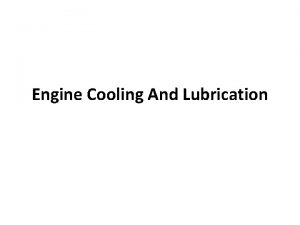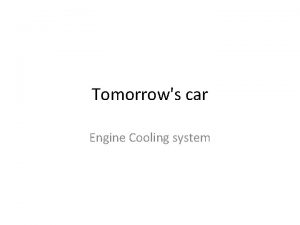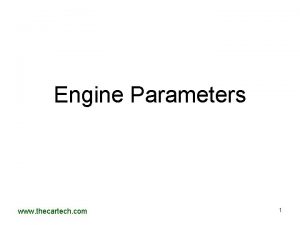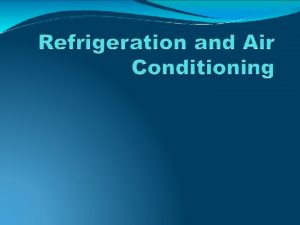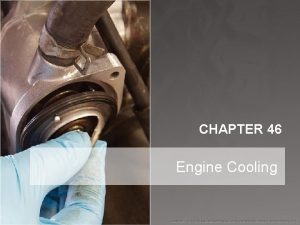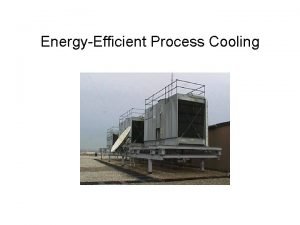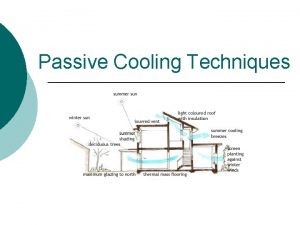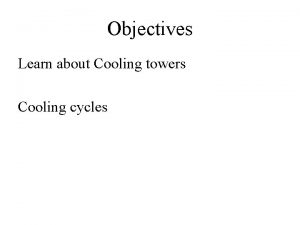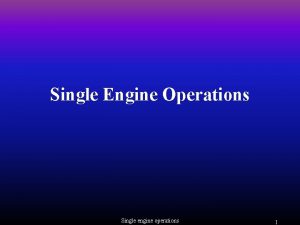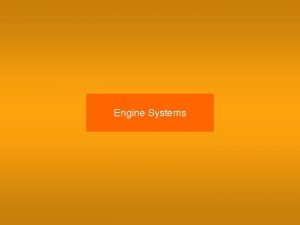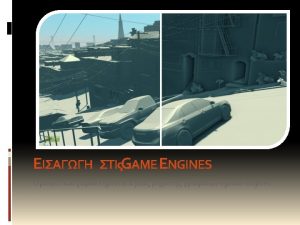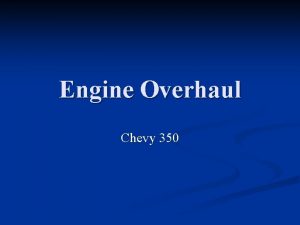Tomorrows car Engine Cooling system Introduction Tomorrows car















- Slides: 15

Tomorrow's car Engine Cooling system

Introduction • Tomorrow's car is based on gas reduction and consumption of energy • This will require re-designing and restructuring the engine cooling system • The engine Cooling systems will be required to not only work faster but more efficiently to successfully cool the engine, saving on energy consumption.

Technical dimensions • Engine cooling systems are entering the smart era where instead of being controlled manually, they will be based on smart technology. • The smart engine cooling system is optimized and set to the driver needs and driving conditions, including the external environmental atmosphere. • Strong polymer agents provide insulation, which provides better insulation

Cost • Silicon polymers are slightly more costly, o install. • The initial cost is overshadowed by the maintained costs which are minimal • The current engine colling system requires manual attention and adjustments to the external tempperature. Consumers are constatky expected to replace the engine cooling sysem, which will not be the case anymore.

Benchmarking • Linear polymers which are used in the new cooling systems are more flexible than the covalent polymer • Tested on the hybrid ford, the new cooling system performed 80% better than the original cooling system • The driver can at anyone time, override the cooling system , should he feel that the engine is overheating

Concepts • The first and most influential form of cooling system, makes use of the current system, but installs software that controls the engine heat internally. • Gelling of linear polyamides t develop better cooling material, although the cost of the same has been found to be inhibiting

Advantages • The smart cooling system adjusts to the changes in outside weather. This means that the engine system no longer requires manual attention, but can switch itself on and off at different temperatures • The smart engine cooling system, works even with diesel, hybrid and fuel cell vehicles just as efficiently • The cooling system also acts as a back up GPS system.

Impediments • The cost of the smart cooling system is slightly inhibitive to the average consumer. • Although the design of the smart engine cooling system makes use of advanced technology, understanding of this technology is not yet complete and therefore hiccups along the way are expected. • The cooling system works best in high priced, technologically advanced, automatic cars. in manual cars, the cooling system is less than effective.

Requirements • In order for the system to work best, it will require that the are be outfitted by an expert. • The fitting will require the entire engine to be taken apart, and re-assembled with the new cooling system • Where it has been tested, the smart engine cooling system has been found to work best, when several parts of the engine are replaced and synchronised

Pioneers • Some of the expected pioneers in this technology include the Ford car company. • The company has been involved in the past decade in developing this technology , and has in fact tested the basic structures of this technology on their cars. • Whereas other companies may follow quickly, there are those who will be strong pioneers such as Ford and Toyota, companies who have been pioneers in the industry.

Evaluation Matrix • The decision matrix applied the following metrics in comparison of the design performance: safety, characteristics of desired airflow, implementation cost, effort and time required to produce, ease of manufacturing, visual appeal, learning experience and “coolness”

Cont…

Propitiation • The smart cooling system reduces the dry bulb temperature, increasing humidity • This in turn translates to a direct cooling system, which though slightly complicated, is also much more effective in terms of managing engine temperatures.

Failure management and assessment • The wheel which rotates causing hot reactivation of air, could fail to move. Poor, slow and no movement is caused mainly by humidity and moisture. • The wheel can be dried simply by opening and exposing it. Where rust has entered, replacement remains the only option. • The temperature management can also be separated from the humidity control for more efficient service.

Conclusion • The smart car cooling system will likely be the first step towards ensuring a safe environment, one that is not damaged by exhaust fumes. • The smart car cooling system will ensure the durability of car engines, taking the cost of maintaining a car to an all time low.
 Lubrication and cooling system
Lubrication and cooling system Types of water cooling system in engine
Types of water cooling system in engine Engine cooling system
Engine cooling system Smart car cooling system
Smart car cooling system Qq moves
Qq moves Sjacl
Sjacl Planning alternative tomorrows with hope
Planning alternative tomorrows with hope Planning alternative tomorrows with hope
Planning alternative tomorrows with hope Tomorrows technology and you george beekman
Tomorrows technology and you george beekman Tomorrows doctors
Tomorrows doctors All tomorrows mbti
All tomorrows mbti External vs internal combustion engine
External vs internal combustion engine Ue4 wheeled vehicle
Ue4 wheeled vehicle Car engine size chart
Car engine size chart Standard refrigeration heat exchanger
Standard refrigeration heat exchanger Ess cooling system
Ess cooling system

